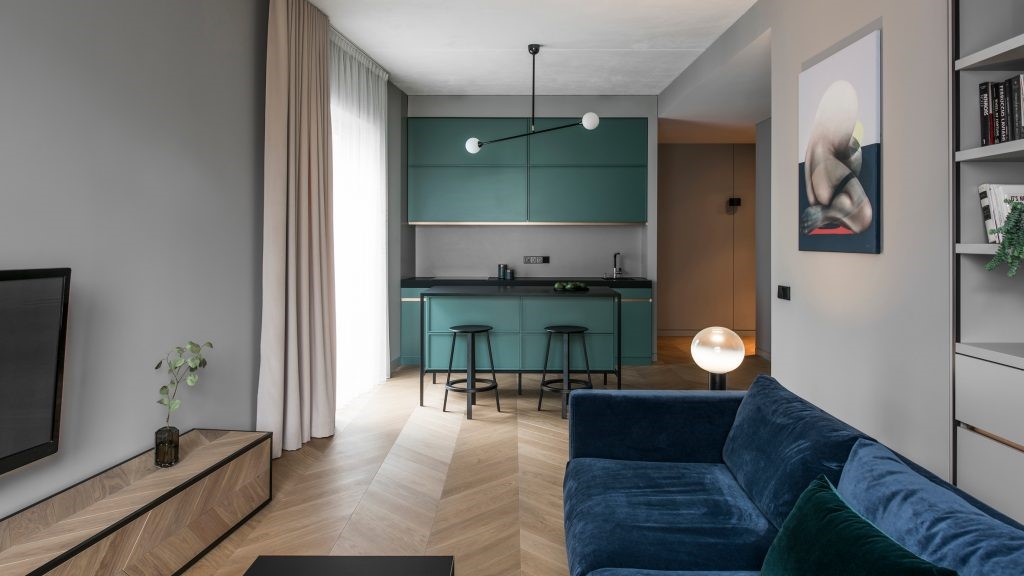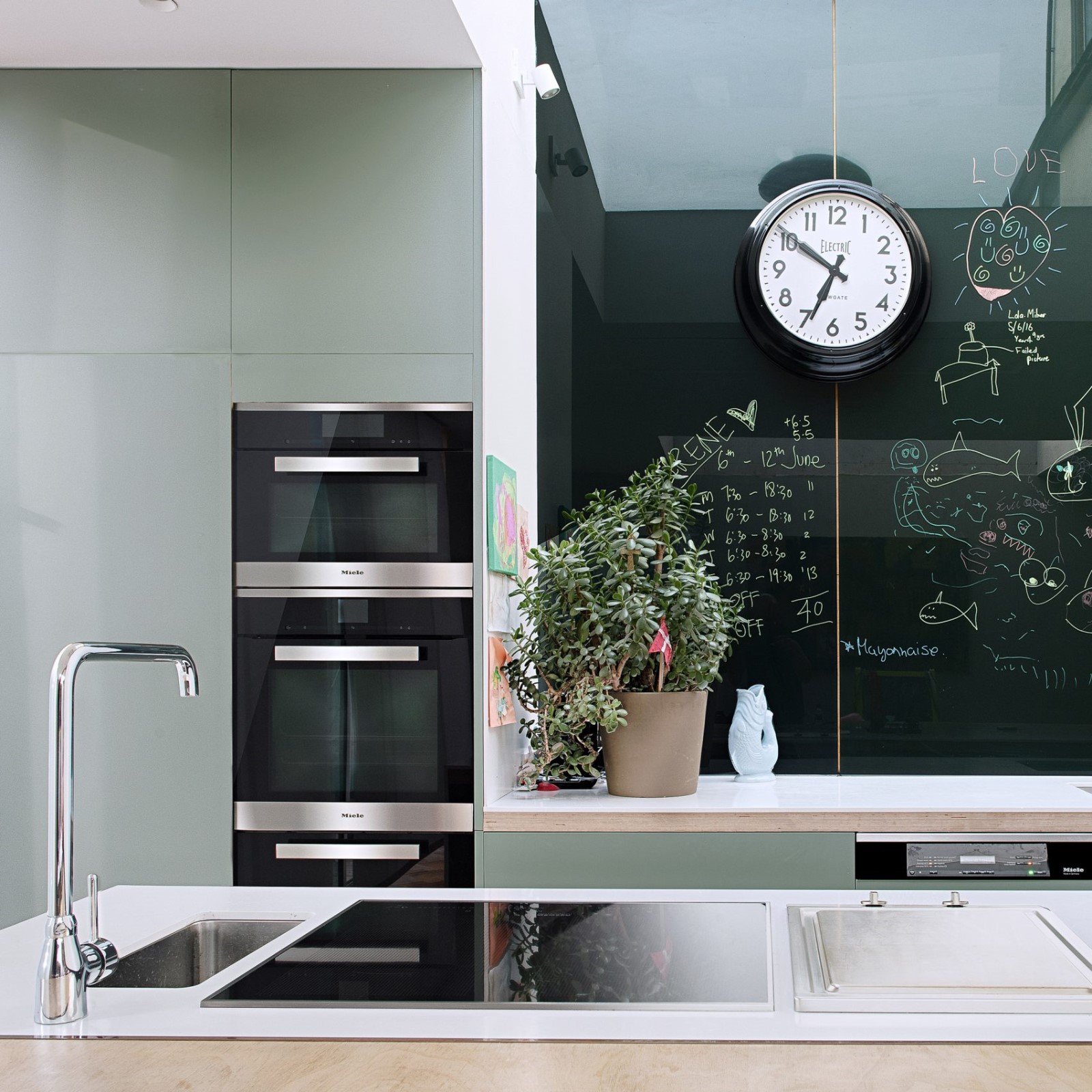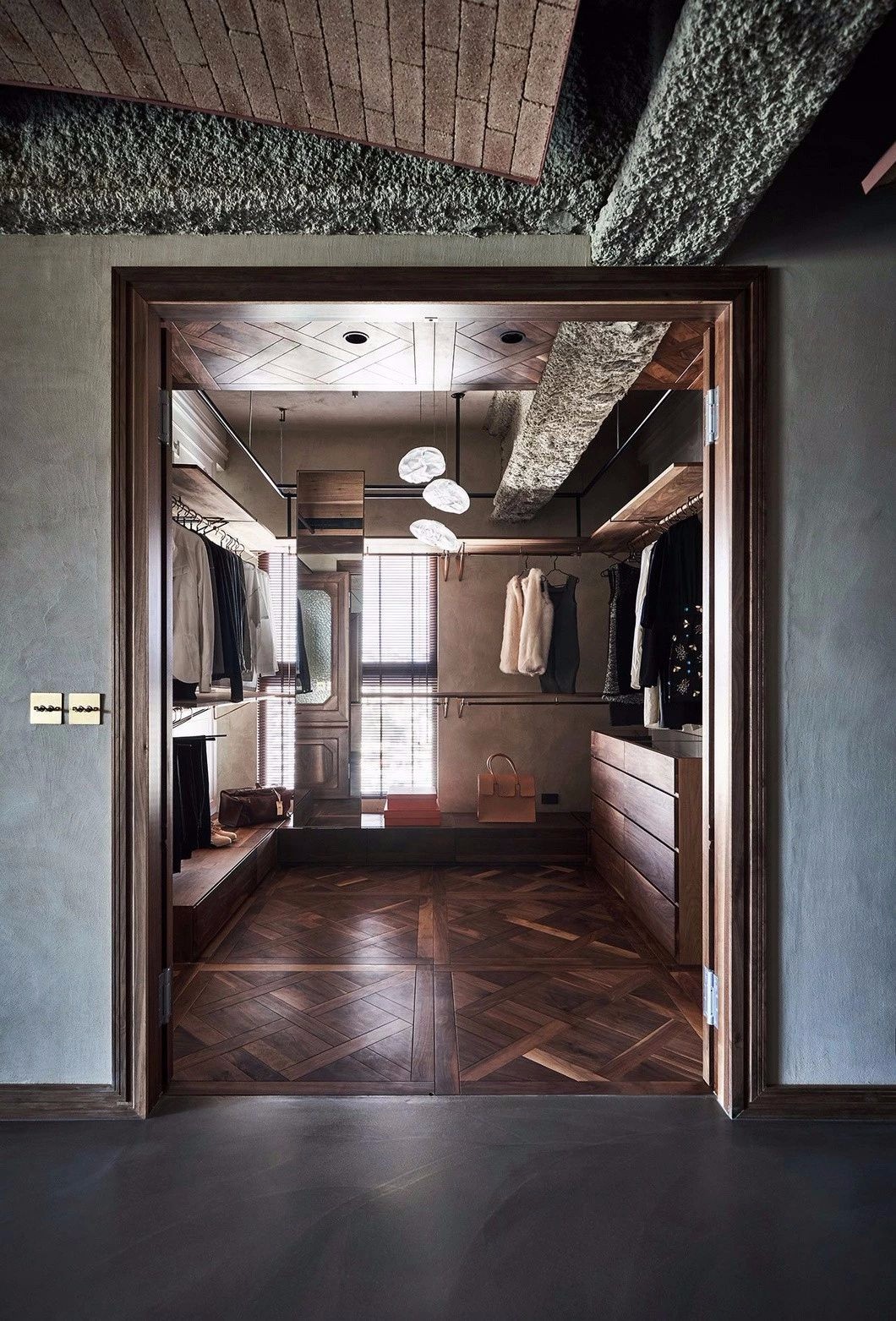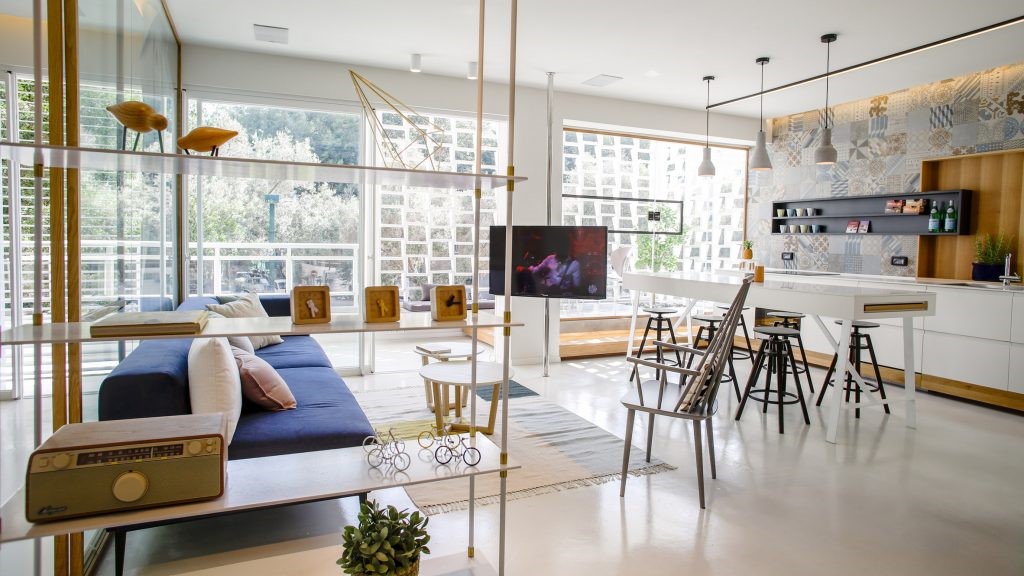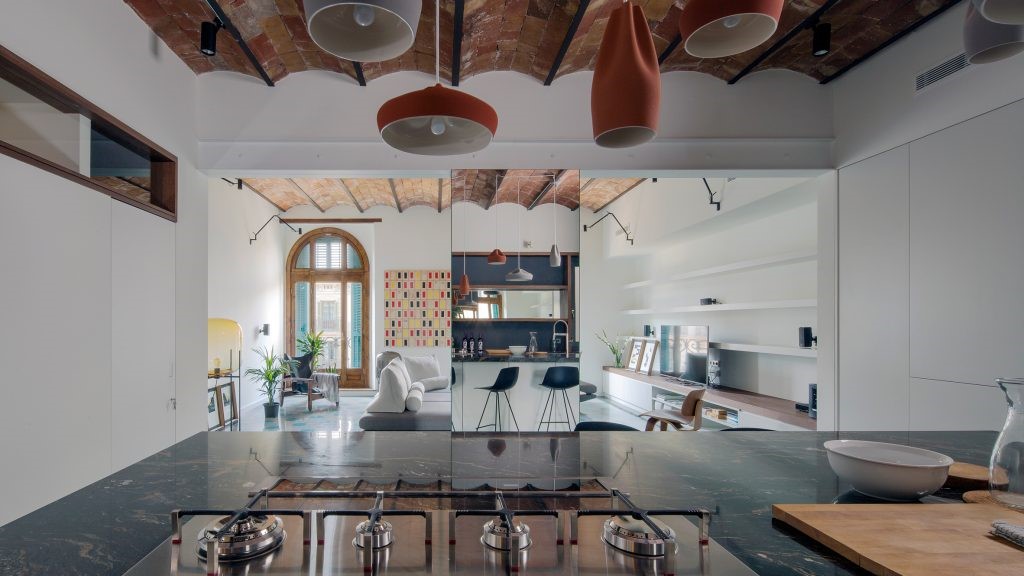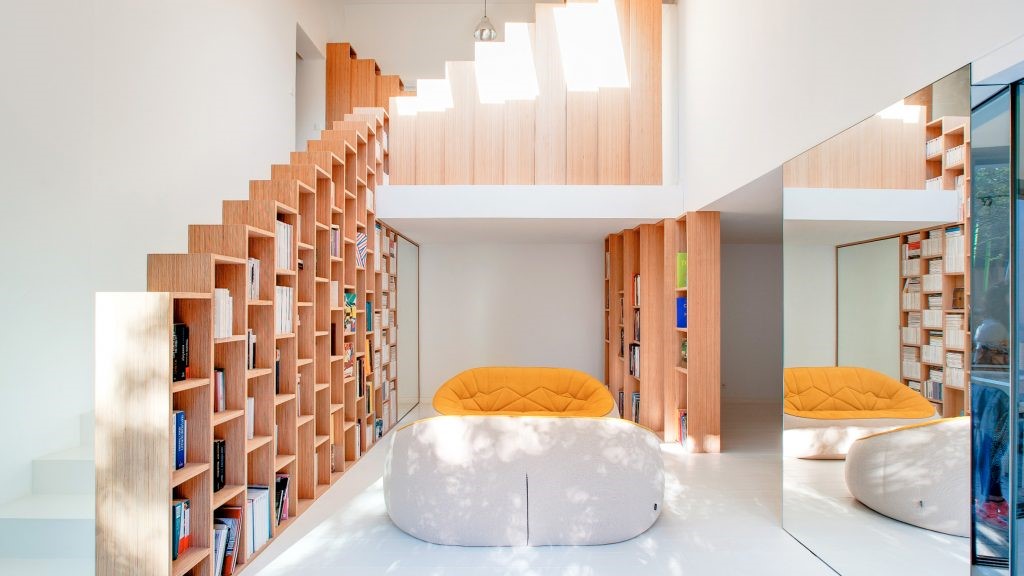Casa Abierta Rosario Talevi
2016-09-08 11:00
© Javier Agustín Rojas
c.哈维尔·奥古斯丁·罗哈斯


© Javier Agustín Rojas
c.哈维尔·奥古斯丁·罗哈斯


架构师提供的文本描述。对于一位正在进行他们第一次建造的项目的建筑师来说,将几年的教育浓缩成一个单一的项目是一种强烈的诱惑。然而,这种崇高的愿望通常受到预算、地理和物质限制的现实的制约。阿根廷建筑师罗萨里奥·塔列维(Rosario Talevi)的第一个项目就是这样,这座房子被称为卡萨·阿比塔(Casa Abieta)。不过,这里还有一个额外的参数,不是遇到的,而是大多数建筑师在“处女航”中遇到的:客户是她自己的母亲。该项目最引人注目的是,相关参数不仅塑造了最终建筑,而且还加强了最终建筑。导致信念的条件的结果,这种约束产生的创造力是塔列维的家开玩笑的证据。
Text description provided by the architects. For an architect working on their very first built project, the temptation to condense several years’ worth of education into a single is a strong one. Usually, however, such lofty desires are tempered by the realities of the budgetary, geographical and material constraints. Such was the case with Argentinean architect Rosario Talevi’s first project, a house known as Casa Abieta. There was though, an additional parameter here that isn’t something encountered but most architects during their “maiden voyage”: the client was her own mother. What is most striking about the project is the manner in which the parameters in question have not only have shaped but also enhanced the final building. The result of conditions leading to convictions, the creativity that comes from such constrictions is playfully evidence by Talevi’s house.
© Javier Agustín Rojas
c.哈维尔·奥古斯丁·罗哈斯


这是一个自2011年以来一直在进行的项目,CasaAbierta位于乌拉圭东南海岸罗查的一个海滨村庄La Pedrera不远处。它的地理位置首先以其崎岖的美丽而著名;但这种荒野超越了地理范围,描述了历史背景以及可用于该项目的材料和资源的预算和性质。这座房子位于土地中央,曾被设想为拉佩德雷拉和鲁比角的联合实体,这将构成一个城市海滩度假村。这一始于20世纪30年代的计划从未付诸实施,但它所依据的城市法规确实经久不衰。这片34米长x 8.8米宽的地块,距最近的邻居约2公里,依附于这些未完工的“看不见的”街道。这种密度-从来没有过-也意味着根本的基础设施问题,如与水电的连接-甚至是通向地块的一条道路-都没有。
A project that has been on-going since 2011, Casa Abierta is located not far from La Pedrera, a seaside village in Rocha on the south east coast of Uruguay. Its location is notable in the first instance for its rugged beauty; but this wildness extends beyond the geography, characterising the historical context as well as the budget and nature of the materials and resources available for the project. The house is in the middle of land that was once envisioned as a joint entity of La Pedrera and Punta Rubia, which would form an urban beach resort. The plan, which dates from the 1930s, never materialised but the urban regulations according to which it was conceived do endure. The 34m long x 8.8m wide plot, some 2 kilometres from the nearest neighbour, adheres to these unfinished, “invisible” streets. This density-that-never-was also means that basic infrastructure concerns, such as connection to water and electricity grids – even a path leading to the plot – were absent.
© Javier Agustín Rojas
c.哈维尔·奥古斯丁·罗哈斯




© Javier Agustín Rojas
c.哈维尔·奥古斯丁·罗哈斯


这些参数的影响体现在结构上,不是妥协,而是决定性的姿态。这座房子被认为是两个身体的组合:一个是对土地的限制作出反应,沿着整个34米长的地块延伸。它占据允许的最大宽度(6.8米),并锚定在其最高点。第二个身体,对角线向南,中断了房子的正交系统,在这个过程中提供庇护,以抵御强烈的东南风,形成周围的景观。卡萨·阿比埃塔(Casa Abierta)坐落在离地面两米高、最高7.5米的一座木结构上,可以看到周围景观的充足景观,即使在未来,即使新建筑出现,也将继续这样做。
The effects of these parameters are manifest in the structure not as compromises but as decisive gestures. The house is conceived as the assembly of two bodies: one that responds to the restrictions of the land and stretches along the lot’s entire 34m length. It occupies the maximum width allowed (6.8m) and is anchored on its highest point. The second body, diagonally orientated to the south, interrupts the house’s orthogonal system, in the process providing shelter against the ferocious south-easterly wind that has shaped the surrounding landscape. Resting on a wooden structure elevated 2m above the ground and standing at a maximum height of 7.5 m, Casa Abierta has access to ample views over the surrounding landscape and will continue to do so even if in the future, even if new constructions appear.
© Javier Agustín Rojas
c.哈维尔·奥古斯丁·罗哈斯




© Javier Agustín Rojas
c.哈维尔·奥古斯丁·罗哈斯


除了房屋的布局之外,解决基础设施限制的技术也是充满信心的语言,而不是妥协。它的木制框架是由FSC认证的埃利奥蒂松木和巴西的桉树建造的(都是当地提供的,降低了成本),这种结构自然是环保的-但是把它称作是有点扁平的。“生态适应”或“尊重生态”可能是更恰当的描述。来自自然水井的水(通过三步系统过滤)使用太阳能加热,在冬天,中央烟囱会使整个房子变暖,这就不需要任何额外的供暖系统了。由于建筑师决定用半透明聚碳酸酯建造的围墙包围楼梯,自然光线泛滥。这座房子的第一层位于地面上方两米处,在烟囱周围形成了一个大房间。第二层包括两间卧室和一层甲板,上面有屋顶露台。
Beyond the layout of the house, the technology which addresses the infrastructural limitations is again, steeped in the language of confidence rather than compromise. With its wooden framed built from FSC-certified Pinus elliotii and Eucalyptus from Brazil (both locally available, keeping costs down) the structure is naturally eco-friendly – but to call it such is a little flattening. “Eco-adapting” or “eco-respecting” might be a more appropriate description. Water from a natural well (filtered through a three step system) is heated using solar energy and during the winter, the central chimney warms the entire house, negating the need for any additional heating system. Natural light floods in thanks to the architect’s decision to surround the staircase with enclosing walls build from translucent polycarbonate. The house’s first level sits two meters above the ground, with the living space forming one large room arranged around that chimney. The second level comprises two bedrooms plus a deck, with rooftop terrace on the level above.
© Javier Agustín Rojas
c.哈维尔·奥古斯丁·罗哈斯


考虑到项目的时间安排,Talevi说:“在设计CasaAbierta的时候,我正式成为了一名建筑师。作为我的歌剧和家庭项目,建造房子成了一种极其个人化的体验。这也违背了我在学生时代学到的一切。这是一个反复检验知识、信仰和参考的过程。在对空间的概念、定义和使用提出质疑的同时,我也在探索一个共同的设计过程和家庭生活的亲密关系。“卡萨·阿比埃塔(Casa Abierta)对空间的定义,对建筑师、他们的客户和观察者来说,已经找到了意义:一栋房子,一个家,作为创造力催化剂的约束的持久证据。
Reflecting upon the timing of the project, Talevi remarks, “While designing Casa Abierta, I officially became an Architect. Being both my opera prima and a family project, building the house became an extremely personal experience. It also defied everything I had learnt during my years as a student. It was a process of trial and error that examined knowledge, beliefs and references. While questioning ideas about space, its definition and its use throughout time, I was also exploring a shared design process and the intimacy of family life.” The definition of space that characterises Casa Abierta has already found meaning for the architect, their client and observers alike: a house, a home, enduring proof of constraint as a catalyst for creativity.
© Javier Agustín Rojas
c.哈维尔·奥古斯丁·罗哈斯
























































Architects Rosario Talevi
Location Punta Rubia, Uruguay
Category Houses
Area 78.0 sqm
Project Year 2011
Photographs Javier Agustín Rojas

















.jpg)
